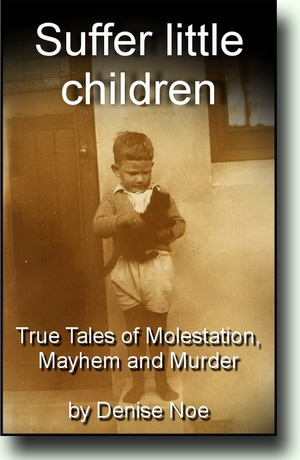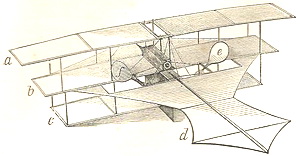 Suffer
Little Children - true crime cases of child molestation, mayhem and murder.
Suffer
Little Children - true crime cases of child molestation, mayhem and murder.
Incredible accounts - detailed, searing, forensic, and totally researched.
The stories covered in the collection range from historical to very recent. There is a chapter about the 18th Century torture-murderer Elizabeth Brownrigg, the racist 1955 slaying of Emmett Till and the 1965 Alice Crimmins case.
Other cases include the “Burn Boy” case of David Rothenberg, the famous Polly Klaas case, the murder of child actress Judith Barsi, the molestations committed by “Father” John Geoghan, the torturing to death of Sylvia Likens, the 2011 water-deprivation murder of 10-year-old Jonathan James, and the 1973 case of Poor Little Rich Boy, Jean Paul Getty III, grandson of the wealthiest man on earth. (78,000 words.)
A Buzzword eBook first release. $2.99. Use our secure shopping cart here:
Read an
extract from the book here:
Chapter 1: Elizabeth Brownrigg's Brutality
Living in London, England in the mid-18th Century, Elizabeth Brownrigg was an eminently respectable wife, mother, and midwife. She had long been married to successful housepainter and plumber James Brownrigg, and had borne sixteen children.
Drawings of her show a dark-haired, middle-aged woman whose most striking feature was her large, hooked, irregular nose. She also possessed a pursed mouth, strong chin, and thin neck.
The Brownriggs had grown up in Greenwich where they met and married. In the seventh year of their marriage, they moved to London, probably for the greater employment opportunities there. James Brownrigg made enough at his dual occupations to rent a cottage for vacations.
However, as the family grew, its finances were squeezed. By the time Elizabeth gave birth to their sixteenth child, they had to give up the cottage.
Mrs. Brownrigg supplemented the family income by working as a midwife. She became known for her caring and competency and was considered the best midwife in the district. Her services were much sought after so she decided she needed some help in her work and applied for apprentices.
In 1765, authorities at St. Dunstan's Parish placed impoverished 14-year-old Mary Mitchell in the Brownrigg home as an apprentice. Both the placement officers of St. Dunstan's and the girl herself must have thought her lucky for a chance to learn under the esteemed midwife. Learning such an important skill—in an era when large families were the norm and good midwives were in great demand -- was often the only way for a lower-class girl to escape poverty without ending up in the brothel.
The first month of Mary Mitchell's apprenticeship passed without incident. Then the busy midwife decided she needed more assistance. Mary Jones, a teenager who had been living in a foundling hospital, joined Mary Mitchell.
Shortly after that, Mrs. Brownrigg's attitude toward both her young wards changed. She was strangely enraged at them, especially Mary Jones. She often ordered Mary Jones to lay across two chairs, tied her down, and then flogged up and down the girl's body with a whip, only stopping because her arm was too tired to raise it again. Then she splashed water across the beaten, bloodied girl. If Jones fainted, Mrs. Brownrigg shoved her head in a pail of water to revive her.
Mrs. Brownrigg beat both girls senseless for the slightest offense. She also forbade them to leave the home and locked them in their rooms at night. However, Jones' room was near a hall leading to a door opening into the street. The door to the hall was locked each evening but on one night, the key was left in the lock and Jones saw her chance.
That morning, she crept softly to that door and stole out into the street. With one eye blinded and covered with wounds, she made her way over the narrow cobblestone streets and back to the foundling hospital. The appalled officials had the hospital's lawyer, Mr. Plumbtree, draw up a letter demanding an explanation for the girl's condition. It was sent to the Brownriggs who made no reply. Amazingly, the hospital's hierarchy took no further action. Perhaps they did not want to antagonize a respected family for the sake of a poor orphan.
Their inaction left Mary Mitchell a prisoner and victim in the Brownrigg house and she would remain there, regularly tormented, beaten, and humiliated, for a year. As Leonard Gribble wrote in Queens of Crime, Mitchell was 'dressed in filthy rags, forced to spend long hours in manual toil, and given food that was little better than kitchen scourings' while being 'incessantly beaten and mocked.'
One day Mitchell escaped from the home but John Brownrigg, one of Elizabeth and James' sons, caught her in the street and dragged her back. Mrs. Brownrigg doubled her torments as punishment.
Mrs. Brownrigg applied to another precinct for another apprentice and a third Mary, 14-year-old Mary Clifford, was put in the Brownrigg home. With Clifford's appearance, the abuse of the apprentices took a particularly humiliating, semi-sexualized turn as both Marys were forced to work naked while Mrs. Brownrigg beat them bloody with brooms, canes and horsewhips. When she got too tired to keep beating them, Mr. Brownrigg or John would take over. Sometimes Mrs. Brownrigg wrapped chains around the girls' necks and nailed one end to a door.




